Panasonic TX-L47DT50 Review
Panasonic TX-L47DT50
Updated with video: A classy-looking 47in LCD TV with plenty of features, and a few problems.
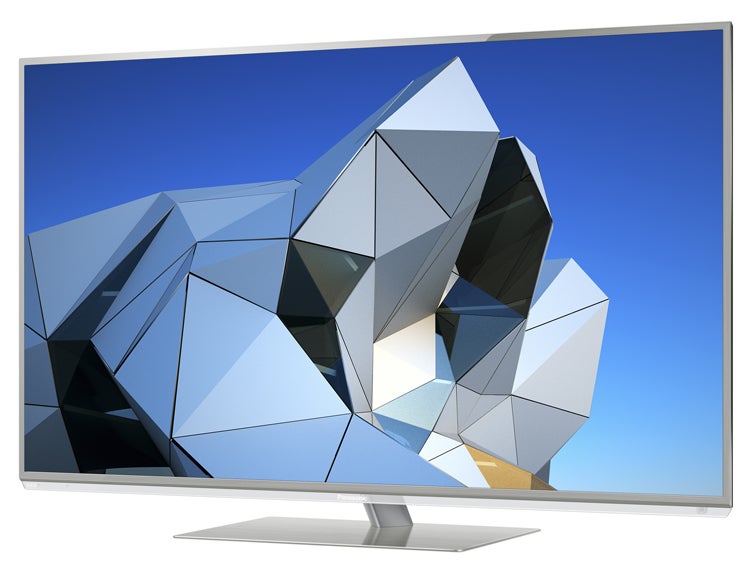
Verdict
Pros
- Gorgeous design
- Bright, colourful material looks excellent
- Terrific 3D performance
Cons
- Black level depth is unimpressive
- Dynamic contrast system is clumsy
- No backlight adjustment
Key Specifications
- Review Price: £1245.00
- 47in LCD TV with edge LED lighting
- Active 3D playback
- Viera Connect online features
- Ultra-slim design
- Extensive multimedia playback options
There have been a few issues too, however, particularly with the way Panasonic’s new 55in panels handle dark scenes. It’s as if Panasonic hasn’t yet fully mastered the admittedly tricky art of successfully lighting a really massive screen with lights ranged around its edges.
With this in mind, we’re intrigued to see what we make of the Panasonic TX-L47DT50. For with its 47in screen, it sits neatly between the 42in Panasonic sizes we’ve generally liked and the 55in models we generally haven’t.
Video review
Well specified
The DT50 part of its name signifies that the L47DT50 belongs to Panasonic’s second-best TV series, one step down from Panasonic’s WT50 flagships. So as you would expect, it’s very well specified indeed.
For starters, its design features a remarkably slender (barely 1cm) bezel adorned with a lovely brushed metal finish. Its rear is also trim, ensuring that it’s right up there aesthetically with the big guns from its Korean rivals.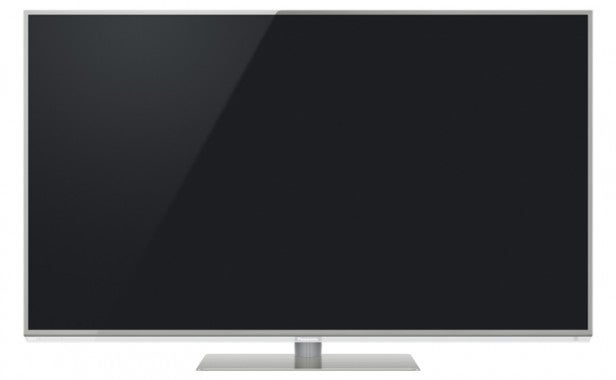
Connections
Its connections are suitably extensive too. Four HDMIs get the ball rolling, and these are all built to the v1.4 spec to support the set’s active 3D playback. Next, we were intrigued to find an LNB input alongside the usual RF tuner jack, which turns out to feed into a fully functioning Freesat tuner.
To be honest, Freesat doesn’t seem quite as compelling an option as it used to be now that Freeview is available over a much wider part of the country and is also broadcasting HD. But then choice is always a good thing.
Multimedia talents
Any high-end TV worth its salt these days also needs to support the modern world’s obsession with multimedia. And the Panasonic TX-L47DT50 is well up to the job, thanks to three USB ports, an SD slot, LAN and built-in Wi-Fi network options, and a D-Sub PC port. The USBs can be used to record from the tuners as well as playing back a solid selection of video, photo and music files, while the LAN/Wi-Fi options can be used for either streaming the multimedia from networked DLNA PCs or for taking the TV online, with Panasonic’s Viera Connect service.
Viera Connect is still a little off the pace in content terms compared with what’s on offer from the likes of Sony and, especially, Samsung and LG. But the general quality of the content is high on Panasonic’s platform, even when it comes to some of the games on offer. Also, some aspects of its interface – most notably the marketplace where you can buy apps and even hardware – are excellent. 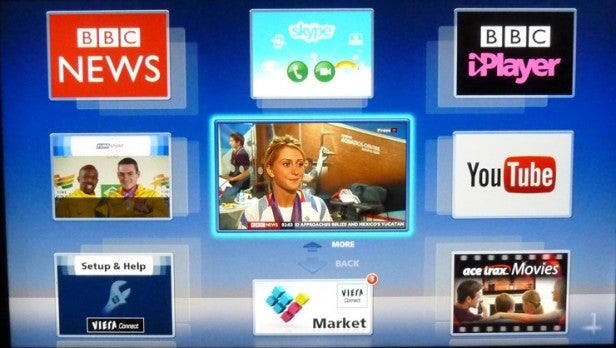
The main problems are that the key interface for accessing your installed apps is a little clunky, requiring too much tedious delving through different menu ‘layers’; and that at the time of writing there’s no LoveFilm app to accompany the BBC iPlayer, Netflix and Acetrax headliners.
No dual-core
We should add that the TX-L47DT50 series doesn’t enjoy the dual-core processing found inside the WT50s, and so you can’t enjoy those models’ impressive multi-tasking functionality while using the online features.
As noted earlier, the Panasonic TX-L47DT50 uses edge LED lighting to produce its pictures. Unlike the flagship WT50 series, though, the L47DT50 does not carry a local dimming engine, so as with the previously tested Panasonic L55DT50, we most likely won’t find this model achieving the same black level depths that the WT50s do.
One of Panasonic’s most potent image processing systems is working away at the Panasonic TX-L47DT50’s heart, as is clearly evidenced by a claimed 1600Hz system. This is achieved through a combination of a 200Hz native panel, a scanning backlight, and sophisticated frame interpolation processing, and bodes very well for the TV’s sharpness and motion clarity.
The TX-L47DT50 is well equipped with picture setting aids, including colour management, gamma settings and plenty of options for all of its various processing elements. No surprise, then, to find the set endorsed by the Imaging Science Foundation (ISF) as a set capable of receiving a professional calibration from one of its engineers should you so desire.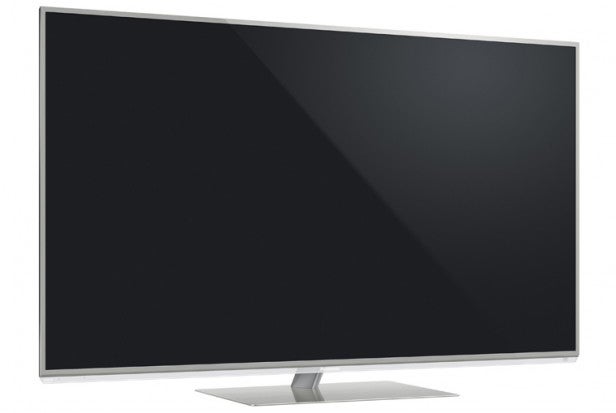
Inevitably we spent a good deal of our time while reviewing the Panasonic TX-L47DT50 engrossed in the Beeb’s HD coverage of the Olympics. And in these circumstances Panasonic’s set gave a very fine account of itself.
Dynamic colours
For starters, we were hugely impressed by the dynamism of the TX-L47DT50’s images. Colours are outstandingly punchy and vibrant, with rich saturations driven forcefully off the screen by its extremely high brightness output. It’s a really eye-catching combination, made all the more striking by the impressively extreme range of the colours on display.
Also extremely apparent while watching all the Olympics footage is the gorgeous clarity of the L47DT50’s images. Detail levels in the Beeb’s HD feeds are exemplary, with immaculate edges and pretty much endless subtlety when it comes to rendering such HD minutiae as the texture of the athletics track or the beads of sweat on the athlete’s faces.
Fast response panel
Even better, thanks to the Panasonic TX-L47DT50‘s excellent fast-response panel and powerful video processing, there’s hardly a trace of motion blur, even when the TV is first switched on (and so is running from cold).
You don’t even need to call in Panasonic’s motion processing systems to enjoy the excellent clarity the panel has to offer. Though if you do want to try out the Intelligent Frame Creation system on its lowest setting, you can do so (and enjoy a small reduction in judder) without the picture starting to look too processed.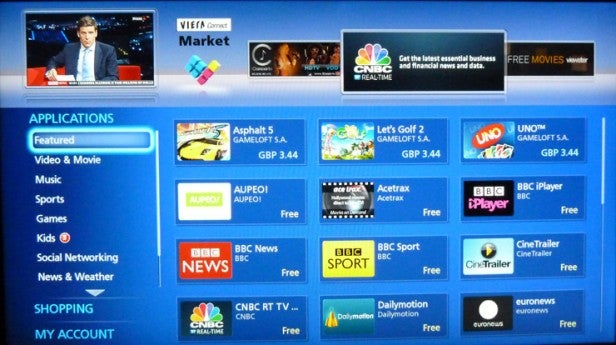
The generally high brightness levels of the Olympics footage also gives the impression at this stage that the Panasonic TX-L47DT50 is capable of producing a decent black level response. Certainly dark bits of predominantly bright images seem to enjoy a reasonably black tone.
The trouble with Harry
Aware that this appearance of good black levels might be an optical illusion caused by the extreme brightness and colour punch of the image, and with the black level problems of the L55DT50 still fresh in our minds, we tentatively fired up our current favourite contrast tester, the final Harry Potter movie on Blu-ray. And unfortunately Mr Potter and his friends caused the 47in model the same pretty much exactly the same problems witnessed on the 55in.
Basically, really dark scenes reveal that the L47DT50 actually isn’t capable of reproducing a really respectable black colour unless there’s practically no light in the scene at all, at which point the TV pretty much shuts its LED lights down altogether (meaning shadow detail takes a significant hit).
The single clearest example of the Panasonic TX-L47DT50‘s black level issues can be seen on the Harry Potter disc during the shot where Harry, Hermione and Ron have a brief discussion at the top of some stairs after chatting to a goblin, about five minutes into the film. The shot starts in a relatively bright room downstairs before panning upwards with the light in the shot constantly reducing until you’re left with a shot that’s extremely dark.
On the L47DT50, where the shot contains a fairly even mixture of light and dark content, dark areas of the picture look quite much greyer than we’d like them to. Worse, there’s also evidence of backlight inconsistency, where some parts of the picture look unnaturally brighter than others.
This latter flaw is common with edge LED TVs, of course. But what’s particularly painful about its appearance on the Panasonic TX-L47DT50 is that there’s precious little you can do about it, thanks to Panasonic bizarrely not including a backlight adjustment among its picture options. 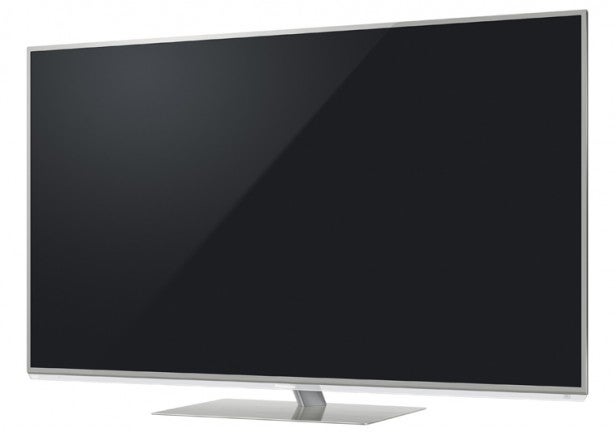
Going back to the Harry Potter shot, as the camera moves up from the bright room the L47DT50 delivers a sudden quite severe drop in the image’s overall brightness, as the TV realises that there’s not much light in the image and really ramps down its light output to boost black levels. But then as soon as a bit more light seeps back into the picture, just as suddenly and obviously the TV ups its brightness output and causes dark areas to look grey again.
Dynamic contrast distractions
Any TV with a dynamic contrast system (ie, most) goes through similar sorts of processes, of course. But the Panasonic TX-L47DT50‘s dynamic contrast machinations are much more distractingly obvious than usual. And if there’s one thing you don’t want to be while watching a film, it’s distracted.
The L47DT50 is arguably at its best in 3D mode. For having secured a pair of Panasonic’s 3D glasses (none are included with the TV, alas), we found ourselves mesmerised by the set’s exceptionally detailed, sharp, crosstalk-free images. The almost total freedom from crosstalk’s annoying double ghosting is particularly welcome, especially as crosstalk continues to plague almost all other LCD TVs to some extent.
Plasma-beating 3D
Also gratifying is the amount of vibrancy 3D images retain despite the inevitable dimming effect of the active shutter glasses. In this respect – and in the smoothness with which colour blends are reproduced – the Panasonic TX-L47DT50 is arguably preferable in 3D mode to Panasonic’s 3D plasmas.
It’s worth noting, too, that thanks to the slight darkening impact of Panasonic’s 3D glasses, the black level problems that cause trouble with 2D viewing are much less noticeable in 3D mode.
Good 3D motion
Sealing the 3D deal is the extremely effective clarity and smoothness of the L47DT50’s motion reproduction, as the set almost completely avoids the increased judder issues commonly witnessed while watching 3D.
There’s no overstating just how effective the Panasonic TX-L47DT50’s 3D is. And in being so excellent, it’s plenty good enough to make the efforts of almost all other 3D LCD TVs look slightly off the pace.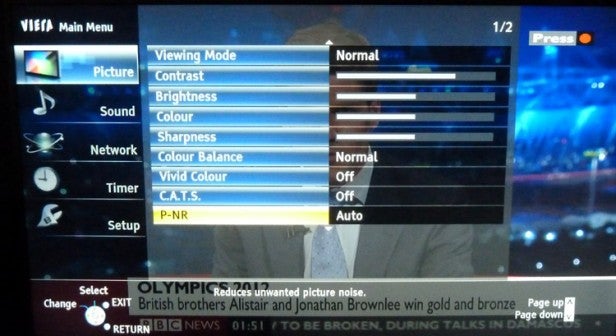
This is great news, of course, if you’re a keen 3D gamer. So it’s also good to find that the L47DT50 measures only around 38ms of input lag – a low enough figure to ensure that your fast gaming skills shouldn’t be heavily dented by the TV’s response time.
Wrapping up with the Panasonic TX-L47DT50’s audio, it’s not bad considering how slender the TV is. With normal TV there’s a reassuringly well-rounded tone to vocals and a reasonably punchy presentation to detail and music. The only downside is that bass is in fairly short supply – but not so much so that trebles sound nastily overexposed and harsh during action scenes.
Verdict
There’s an awful lot to like about the Panasonic TX-L47DT50. Its pictures with bright, colourful content are terrific, its motion handling is superb, and its HD detailing is outstanding. Its design is remarkably attractive too, considering Panasonic’s rather drab design history, and its got plenty of multimedia talents to keep you busy.
Unfortunately, though, the L47DT50’s undoes much of this positive work with its disappointing handling of dark scenes – especially given that this is one of the most expensive 46-47in TVs around right now.
How we test televisions
We test every TV we review thoroughly over an extended period of time. We use industry standard tests to compare features properly. We’ll always tell you what we find. We never, ever, accept money to review a product.
Trusted Score
Score in detail
-
Features 9
-
3D Quality 9
-
Value 6
-
Design 10
-
2D Quality 6
-
Sound Quality 7
Features
| Size (Inch) | 47in |
| Display Type | LED |
| Max. Resolution | 1920 x 1080 |
| Full HD 1080p | Yes |
| Digital Tuner | Yes |
| Freeview HD | Yes |
| Freesat HD | Yes |
| 3D Ready | Yes |
| Refresh Rate (Hertz) | 1600Hz |
Connectivity
| HDMI | 4 |
| Component | 1 |
| Composite | 1 |
| Scart | 1 (RGB) |
| Digital Audio Out | 1 (optical) |
| Headphone | 1 |
| Charging/Computer Connection | 3 |
| Ethernet | Yes |
| WiFi | Yes (built-in) |
Physical Specifications
| Height (Millimeter) | 631mm |
| Width (Millimeter) | 1067mm |
| Depth (Millimeter) | 27mm |
| Weight (Gram) | 1300g |

